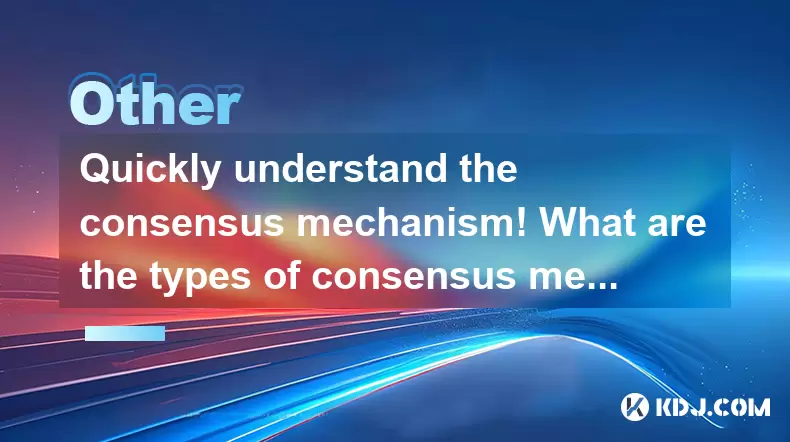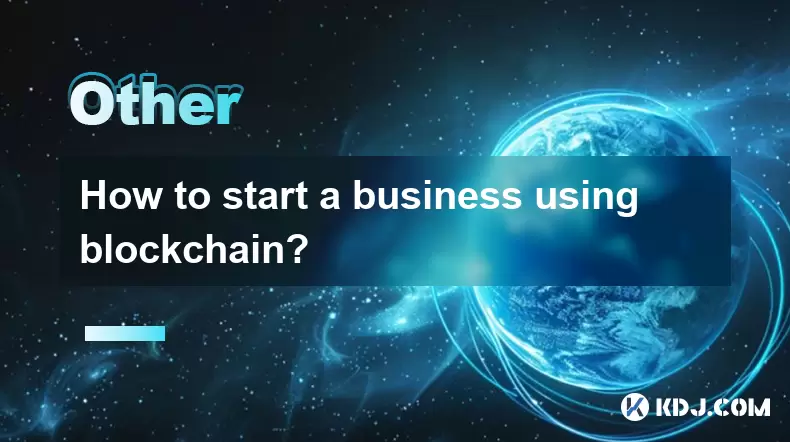-
 Bitcoin
Bitcoin $118300
-0.58% -
 Ethereum
Ethereum $3825
0.11% -
 XRP
XRP $3.137
-0.71% -
 Tether USDt
Tether USDt $0.9999
-0.01% -
 BNB
BNB $803.9
-3.37% -
 Solana
Solana $181.5
-1.94% -
 USDC
USDC $0.9999
0.01% -
 Dogecoin
Dogecoin $0.2238
-2.51% -
 TRON
TRON $0.3358
2.12% -
 Cardano
Cardano $0.7844
-2.16% -
 Hyperliquid
Hyperliquid $43.31
-1.48% -
 Sui
Sui $3.807
-4.04% -
 Stellar
Stellar $0.4203
-1.96% -
 Chainlink
Chainlink $17.79
-3.00% -
 Bitcoin Cash
Bitcoin Cash $567.8
-1.34% -
 Hedera
Hedera $0.2614
-4.30% -
 Avalanche
Avalanche $24.19
-4.46% -
 Litecoin
Litecoin $109.2
-0.74% -
 UNUS SED LEO
UNUS SED LEO $8.969
-0.01% -
 Toncoin
Toncoin $3.404
3.97% -
 Ethena USDe
Ethena USDe $1.001
-0.01% -
 Shiba Inu
Shiba Inu $0.00001307
-3.19% -
 Uniswap
Uniswap $10.33
-1.23% -
 Polkadot
Polkadot $3.884
-4.06% -
 Monero
Monero $312.9
-1.87% -
 Dai
Dai $1.000
0.01% -
 Bitget Token
Bitget Token $4.537
-2.24% -
 Pepe
Pepe $0.00001156
-3.40% -
 Cronos
Cronos $0.1437
-0.89% -
 Aave
Aave $282.8
-2.77%
Quickly understand the consensus mechanism! What are the types of consensus mechanisms?
Consensus mechanisms like PoW, PoS, DPoS, PoA, and PBFT ensure blockchain security and integrity, each with unique processes and trade-offs in efficiency and decentralization.
May 30, 2025 at 06:07 am

Introduction to Consensus Mechanisms
In the world of cryptocurrencies, the term consensus mechanism plays a crucial role in ensuring the integrity and security of transactions on a blockchain. A consensus mechanism is a system that enables network participants to agree on the state of the blockchain, thereby validating transactions and adding new blocks. This process is vital for maintaining the decentralized nature of blockchain networks. In this article, we will explore the different types of consensus mechanisms, their functionalities, and their significance in the cryptocurrency ecosystem.
Proof of Work (PoW)
Proof of Work (PoW) is one of the earliest and most widely recognized consensus mechanisms, famously used by Bitcoin. In PoW, participants, known as miners, compete to solve complex mathematical puzzles. The first miner to solve the puzzle gets the right to add a new block to the blockchain and is rewarded with newly minted cryptocurrency and transaction fees. This process requires significant computational power and energy, making it secure but also resource-intensive.
PoW's security comes from its requirement for substantial computational effort, making it economically unfeasible for any single entity to control the majority of the network's mining power, known as a 51% attack. However, the downside of PoW is its high energy consumption, which has led to environmental concerns and a push for more energy-efficient alternatives.
Proof of Stake (PoS)
Proof of Stake (PoS) is another popular consensus mechanism that addresses some of the drawbacks of PoW. In PoS, the chance of a participant being chosen to validate transactions and add new blocks is proportional to the number of coins they hold and are willing to "stake" as collateral. This method is less energy-intensive than PoW because it doesn't require solving complex puzzles.
PoS systems are often considered more environmentally friendly and can potentially offer faster transaction processing times. However, they introduce new challenges, such as the "nothing at stake" problem, where validators might be incentivized to support multiple blockchain forks, potentially leading to network instability. To mitigate this, many PoS systems implement additional rules and penalties for malicious behavior.
Delegated Proof of Stake (DPoS)
Delegated Proof of Stake (DPoS) is a variation of PoS that adds a layer of democracy to the consensus process. In DPoS, token holders vote to elect a small number of delegates, known as witnesses or validators, who are responsible for validating transactions and creating new blocks. This system aims to increase efficiency and scalability by reducing the number of nodes required to reach consensus.
DPoS can process transactions more quickly than traditional PoS systems, but it also introduces centralization risks, as the power is concentrated among a few elected delegates. To address this, many DPoS networks implement mechanisms to ensure the fair and frequent rotation of validators.
Proof of Authority (PoA)
Proof of Authority (PoA) is a consensus mechanism where the right to validate transactions and create new blocks is granted to a limited number of pre-selected nodes, known as authorities. These authorities are typically chosen based on their reputation and trustworthiness, making PoA suitable for private or consortium blockchains where participants are known and trusted.
PoA offers high transaction throughput and low latency, making it an attractive option for enterprise applications. However, its reliance on a small set of trusted nodes means it sacrifices some of the decentralization that is a hallmark of public blockchains.
Practical Byzantine Fault Tolerance (PBFT)
Practical Byzantine Fault Tolerance (PBFT) is a consensus mechanism designed to achieve consensus in a distributed system, even in the presence of faulty or malicious nodes. In PBFT, a group of nodes, known as replicas, communicate with each other to agree on the state of the system. The process involves several rounds of voting and message exchanges to reach a consensus.
PBFT is known for its high performance and fault tolerance, making it suitable for permissioned blockchains. However, it requires a known set of participants and can become less efficient as the number of nodes increases, limiting its scalability for large, open networks.
Frequently Asked Questions
Q: How does a consensus mechanism ensure the security of a blockchain?
A: Consensus mechanisms ensure the security of a blockchain by requiring network participants to agree on the state of the ledger. This agreement process, whether through computational power (PoW), stake (PoS), or voting (DPoS), makes it difficult for malicious actors to alter the blockchain without the consensus of the majority of the network.
Q: Can a blockchain use multiple consensus mechanisms?
A: Yes, some blockchains use hybrid consensus mechanisms that combine elements of different systems to leverage their strengths. For example, a blockchain might use PoW for initial block creation and then switch to PoS for ongoing validation to reduce energy consumption.
Q: What are the main differences between PoW and PoS?
A: The main differences between PoW and PoS lie in their validation processes and resource requirements. PoW relies on computational power to solve puzzles, which is energy-intensive, while PoS relies on the amount of cryptocurrency held and staked, which is less energy-intensive. Additionally, PoW is more resistant to centralization but slower, whereas PoS can be faster but may face centralization risks if wealth is concentrated.
Q: How do consensus mechanisms impact the scalability of a blockchain?
A: Consensus mechanisms directly impact a blockchain's scalability. PoW and traditional PoS can be slower and less scalable due to their validation processes. In contrast, DPoS and PoA can offer higher transaction throughput and better scalability by reducing the number of nodes needed for consensus or by using trusted validators. However, these improvements often come at the cost of decentralization.
Disclaimer:info@kdj.com
The information provided is not trading advice. kdj.com does not assume any responsibility for any investments made based on the information provided in this article. Cryptocurrencies are highly volatile and it is highly recommended that you invest with caution after thorough research!
If you believe that the content used on this website infringes your copyright, please contact us immediately (info@kdj.com) and we will delete it promptly.
- Dalio's Take: Balancing Bitcoin, Gold, and the Debt Doom Loop
- 2025-07-31 00:51:15
- Ethereum's Epic Rally: A Decade of Decentralization and a Celebration in NFTs
- 2025-07-31 01:11:05
- XRP Price, Altcoins, and the 50x Potential: What's the Buzz?
- 2025-07-31 01:15:14
- BlockchainFX ($BFX): Is This Altcoin the Best Crypto Presale of 2025?
- 2025-07-31 01:21:27
- PENGU Price Plunge? Binance Transfers and Token Transfer Trends
- 2025-07-30 23:10:15
- Navigating Crypto Investment: Bitcoin Mining and the Rise of Cloud Mining in the Big Apple
- 2025-07-30 22:31:15
Related knowledge

How to start a business using blockchain?
Jul 28,2025 at 12:36am
Understanding the Basics of Blockchain TechnologyBefore diving into the process of starting a business using blockchain, it's crucial to understand wh...

What is a token on the blockchain?
Jul 21,2025 at 07:00am
Understanding the Concept of a TokenIn the realm of blockchain technology, a token is a digital representation of an asset or utility that exists on a...

Can blockchain be used for identity verification?
Jul 18,2025 at 02:14pm
Understanding Identity Verification in the Digital AgeIn the modern digital landscape, identity verification has become a critical component for ensur...

What is a consensus mechanism in blockchain?
Jul 21,2025 at 03:01am
Understanding the Basics of Consensus MechanismsA consensus mechanism is a critical component of any blockchain network. It refers to the process by w...

How to explain blockchain to someone with no tech background?
Jul 18,2025 at 11:08pm
Understanding the Basics of BlockchainTo explain blockchain to someone with no tech background, it's essential to start with simple analogies and avoi...

Who invented blockchain technology?
Jul 23,2025 at 01:28am
Origins of Blockchain TechnologyBlockchain technology did not emerge from a single inventor or institution. Instead, it evolved through a series of ac...

How to start a business using blockchain?
Jul 28,2025 at 12:36am
Understanding the Basics of Blockchain TechnologyBefore diving into the process of starting a business using blockchain, it's crucial to understand wh...

What is a token on the blockchain?
Jul 21,2025 at 07:00am
Understanding the Concept of a TokenIn the realm of blockchain technology, a token is a digital representation of an asset or utility that exists on a...

Can blockchain be used for identity verification?
Jul 18,2025 at 02:14pm
Understanding Identity Verification in the Digital AgeIn the modern digital landscape, identity verification has become a critical component for ensur...

What is a consensus mechanism in blockchain?
Jul 21,2025 at 03:01am
Understanding the Basics of Consensus MechanismsA consensus mechanism is a critical component of any blockchain network. It refers to the process by w...

How to explain blockchain to someone with no tech background?
Jul 18,2025 at 11:08pm
Understanding the Basics of BlockchainTo explain blockchain to someone with no tech background, it's essential to start with simple analogies and avoi...

Who invented blockchain technology?
Jul 23,2025 at 01:28am
Origins of Blockchain TechnologyBlockchain technology did not emerge from a single inventor or institution. Instead, it evolved through a series of ac...
See all articles

























































































